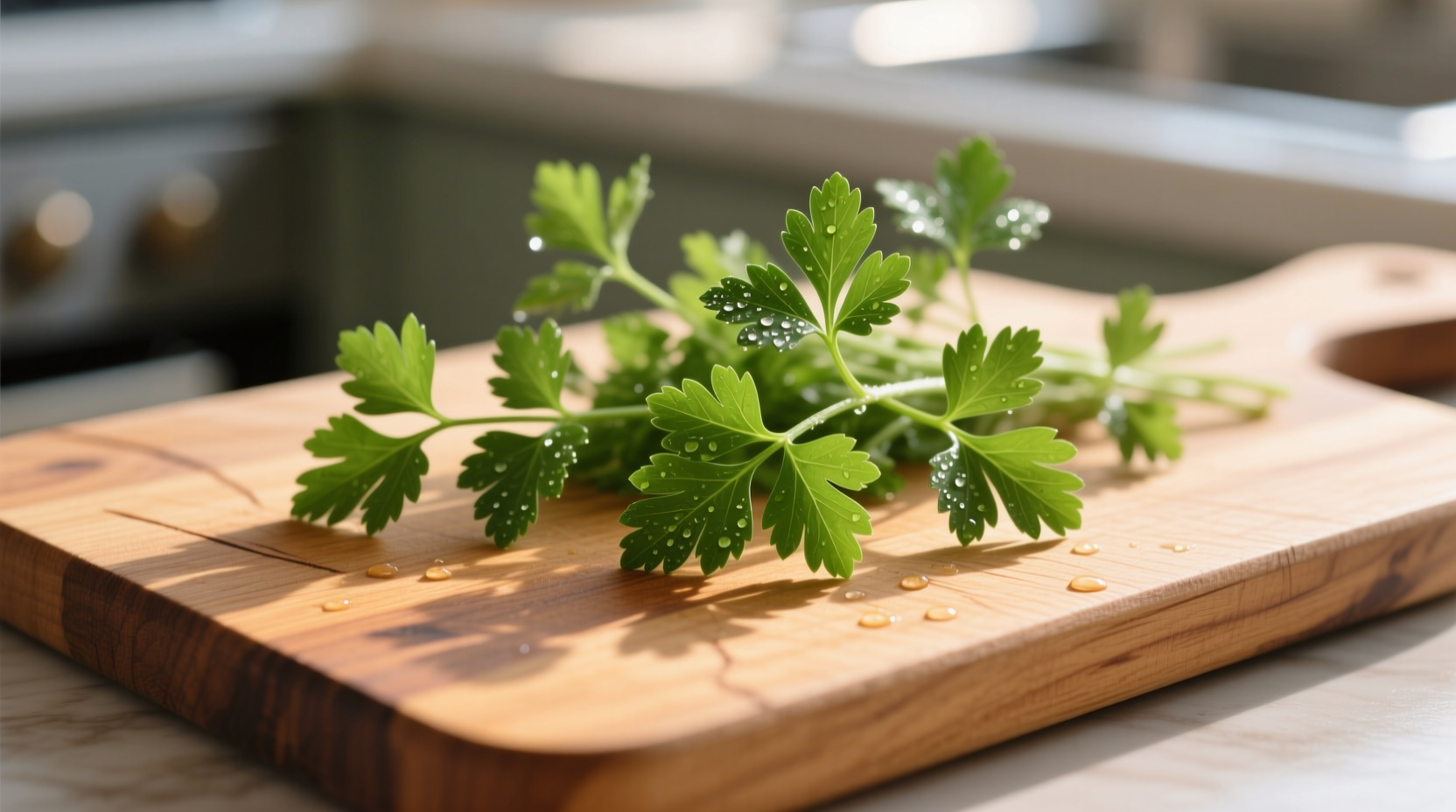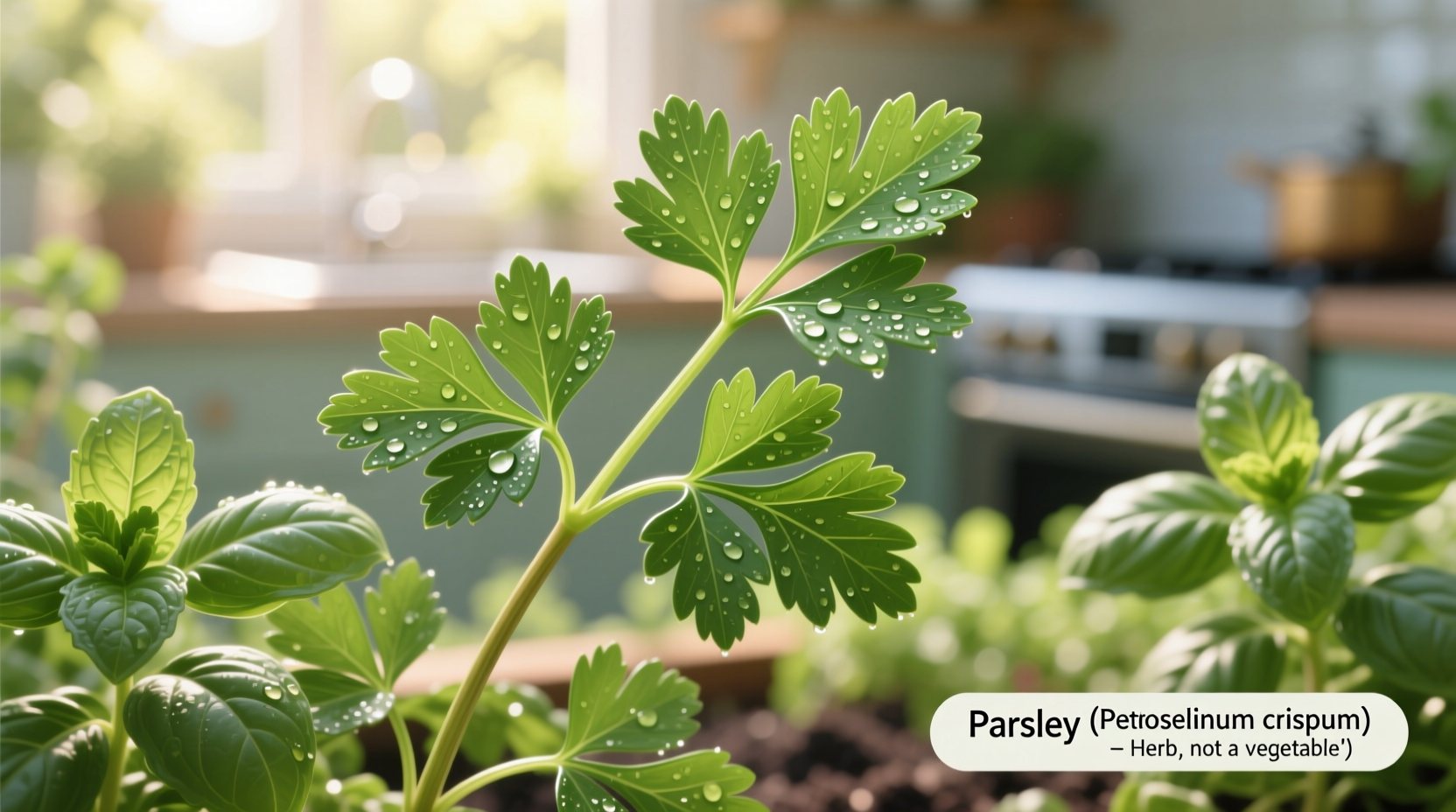Understanding the Botanical Classification of Parsley
When examining is parsley considered a vegetable in botanical terms, the answer becomes clear through scientific classification. Parsley is a biennial plant in the Apiaceae family, which distinguishes it from true vegetables that belong to various plant families including Solanaceae (tomatoes, peppers) and Brassicaceae (broccoli, cabbage).
The United States Department of Agriculture (USDA) classifies plants based on their biological characteristics, and parsley consistently appears in herb categories rather than vegetable classifications. According to the USDA Plants Database, parsley is documented as an herbaceous plant with culinary and medicinal uses, not as a vegetable crop.

Herbs vs. Vegetables: Key Differences
| Characteristic | Herbs (Including Parsley) | Vegetables |
|---|---|---|
| Primary Use | Flavor enhancement in small quantities | Main component of dishes |
| Plant Part Used | Leaves (typically) | Various parts (roots, stems, leaves, flowers) |
| Harvest Timing | Before flowering for peak flavor | At specific maturity stages |
| Nutritional Density | High in specific vitamins but used in small amounts | Significant nutritional contribution per serving |
Why the Confusion Exists: Culinary vs. Scientific Perspectives
The question why is parsley not considered a vegetable often arises because culinary traditions sometimes blur the lines between herbs and vegetables. In cooking contexts, leafy greens like spinach and kale are vegetables, while parsley leaves are herbs—despite both being leafy plants.
This confusion stems from how we use plants in the kitchen rather than their biological classification. Culinary professionals at the Culinary Institute of America explain that "the distinction between herbs and vegetables in cooking comes down to quantity and purpose: vegetables form the foundation of dishes, while herbs provide accent notes."
Historical Classification Timeline of Parsley
Understanding how parsley has been classified throughout history provides additional context for the vegetable question:
- Ancient Greece (500 BCE): Used medicinally and as a garnish, not as a food crop
- Roman Era: Considered sacred, used in religious ceremonies rather than cooking
- Middle Ages: Primarily medicinal applications, occasionally used as a flavoring
- 16th Century: Began appearing in European cookbooks as a seasoning herb
- 19th Century: Formal botanical classification established parsley as an herb
- Modern Era: Recognized globally as a culinary herb, not a vegetable
Practical Implications for Home Cooks
When exploring is parsley a vegetable for cooking purposes, the practical answer affects how you use it in recipes. Unlike vegetables that form the base of dishes, parsley serves specific culinary functions:
- As a fresh garnish that adds color and subtle flavor
- In herb blends like gremolata or persillade
- As a component in bouquet garni for flavoring stocks
- In small quantities within salads for added dimension
The Academy of Nutrition and Dietetics notes that while nutritional benefits of parsley versus vegetables differ in concentration, parsley remains valuable. One-quarter cup of fresh parsley provides 80% of your daily vitamin K requirement and significant vitamin C—though you'd consume far less parsley than you would a vegetable like broccoli.
Common Misconceptions About Parsley Classification
Several myths persist about whether parsley counts as a vegetable in dietary guidelines. The Dietary Guidelines for Americans specifically categorize parsley under "fresh herbs" rather than vegetable servings. While some mistakenly believe that all green leafy plants are vegetables, the distinction lies in usage patterns and nutritional contribution per typical serving.
Another frequent question is can you eat too much parsley like other vegetables. Unlike most vegetables that can be consumed in large quantities, parsley contains compounds that may cause issues when eaten in excessive amounts—further distinguishing it from typical vegetable consumption patterns.
When Classification Matters: Gardening and Nutrition
Understanding the difference between herbs and vegetables for gardening helps home growers plan their spaces effectively. Parsley grows as a herbaceous perennial in suitable climates, requiring different care than vegetable crops. The Royal Horticultural Society classifies parsley under "culinary herbs" in their gardening resources, noting its specific soil and sunlight requirements differ from common vegetables.
From a nutritional standpoint, registered dietitians emphasize that while how parsley compares nutritionally to vegetables shows some similarities, the amount typically consumed makes its nutritional contribution different. You might eat 1 cup of spinach (a vegetable) but only 1-2 tablespoons of parsley (an herb) in a meal.
Frequently Asked Questions
Is parsley considered a vegetable in USDA food groups?
No, the USDA classifies parsley as an herb, not a vegetable. In the Dietary Guidelines for Americans, parsley falls under the category of fresh herbs and does not count toward your daily vegetable servings, though it does provide valuable nutrients in small quantities.
Why do some people think parsley is a vegetable?
The confusion arises because both vegetables and herbs come from plants. Since parsley has edible leaves like some leafy vegetables (spinach, lettuce), people mistakenly categorize it as a vegetable. However, the distinction lies in how they're used—vegetables form the main part of dishes while herbs like parsley are used for flavoring in smaller amounts.
Can I substitute parsley for vegetables in recipes?
Not effectively. While you could technically add more parsley to a dish, it serves a different culinary purpose than vegetables. Parsley provides flavor accents rather than the substantial texture and volume that vegetables contribute. For example, you couldn't replace the spinach in a quiche with an equal amount of parsley and expect similar results.
Is there any context where parsley is classified as a vegetable?
In very rare culinary contexts, some chefs might refer to parsley as a "leaf vegetable," but this is not botanically accurate. The only exception might be in certain cultural cuisines where parsley is used in larger quantities, like in Lebanese tabbouleh salad, but even then, it's still classified as an herb by botanical and nutritional authorities.











 浙公网安备
33010002000092号
浙公网安备
33010002000092号 浙B2-20120091-4
浙B2-20120091-4